Money matters
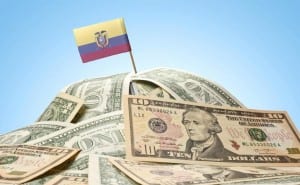 All good things in life are free, some say, but you can’t deny the fact that you have to spend some money here and there to enjoy little luxuries and attractions. When it comes to money in Ecuador, here are some things you need to keep in mind.
All good things in life are free, some say, but you can’t deny the fact that you have to spend some money here and there to enjoy little luxuries and attractions. When it comes to money in Ecuador, here are some things you need to keep in mind.
1. Ecuador’s official currency is the U.S. dollar. 15 years ago, Ecuador underwent a dollarization process which resulted to the elimination of the sucre.
2. ATMS are usually found at major banks, larger cities, airports, malls, and luxury hotels. However, a word of caution. In Ecuador, ATMs are usually offline more frequently compared to machines in other countries. Charges on withdrawals from foreign banks can be quite expensive, as well.
3. Carry some bills, but don’t forget your ATM card. Confirm with your bank to make sure your ATM card/s will work in Ecuador. Cash transactions are easiest, but if ever you run out of bills, you don’t need to worry. All you need to do is head to the nearest ATM to withdraw cash.
Always bring with you 1, 5, 10, and 20 dollar bills as they’re easier to accept than larger bills, even in banks.
4. Change your foreign currencies in Quito, Guayaquil, and Cuenca. While you’re in Cuenca, Quito, and Guayaquil, take advantage of its variety of banks and other facilities and have your foreign currency changed. Once you go out of these cities, it will be harder to spot a casas de cambioor money changing houses, as well as money transfer facilities.
Most banks in the cities are open Monday to Friday, from 9 am to 6 pm. Some banks in Quito and Guayaquil, however, stay open until 8 pm. Meanwhile, casas de cambioare open on weekdays, from 9 am to 6pm.
5. Diner’s Club is the most widely accepted credit card in Ecuador, but you can still use your card from American Express, VISA, and Mastercard. Before you get on the plane to Ecuador, consider raising the limit on your cards in case of emergencies.
Got any questions? Email me at info@livethelifeinecuador.com. See you in paradise!
Ecuador Visas: FAQs and tips
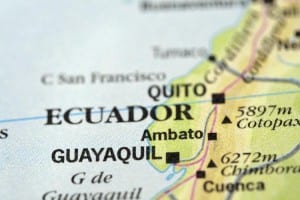 1. Who needs to apply for a visa to Ecuador?
1. Who needs to apply for a visa to Ecuador?
For American, Canadian, and most European passport holders, a visa is not required for a stay of less than 90 days.
2. How do I apply for a visa to Ecuador?
If you intend to stay for more than 90 days, apply for a visaat the Ecuadorian consulatenearest you.
3. What are the kinds of Ecuadorian visas?
There are 2 kinds of Ecuador visas: resident and non-resident.
The non-resident visa is automatically granted to travelers who intend to stay for less than 90 days. There are, however, special visas for longer-stay visitors who are non-residents if they happen to be cultural workers, volunteers, etc.
Resident visas are issued to those who plan on staying in Ecuador for more than 90 dayswith the intention of living, working, or investing in the country.
4. What are the requirements for non-resident visas?
For non-resident visas, you are required to present the following:
- Valid passport for more than 6 months
- A return ticket to your home country (land, sea, or air travel)
- Proof of economic capability to support yourself during your stay (may be requested by immigration authorities upon arrival)
5. What are the requirements for resident visas?
For resident visa applications, you will needto consult with an immigration lawyer. Resident visas come in several types that fit a specific purpose. An immigration lawyer will be in the best position to speed up the application process.
6. How long does it take to apply for a resident visa?
Applications take from 4 to 8 weeks to process because resident visas are approved by the Immigration Board in Ecuador.
7. What happens if I overstay in Ecuador?
You will pay a fine of $200 for every day that you overstay. You will also be barred from re-entering Ecuador for 90 days following your departure.
If you’re in the US and you want more information on the opportunities available in Ecuador, call 239-848-5876. For all other countries, check out the other numbers you find on this page.
Hydroelectric dams are giving Ecuador greater energy sovereignty
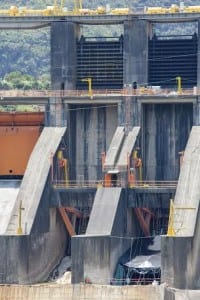 The Manduriacu Hydroelectric Dam was officially inaugurated earlier this year. The 60-megawatt hydroelectric dam is located between the provinces of Imbabura and Pichincha, and is the first of eight dams currently being built in the country.
The Manduriacu Hydroelectric Dam was officially inaugurated earlier this year. The 60-megawatt hydroelectric dam is located between the provinces of Imbabura and Pichincha, and is the first of eight dams currently being built in the country.
About the Manduriacu Hydroelectric Dam
The Manduriacu Hydroelectric Dam features two 30-megawatt turbines and a reservoir with a capacity of 10 million cubic meters. Filling the dam to full capacity takes about ten days.
The hydroelectric dam provides over 2,450 jobs, and around 250,000 families benefit from the energy generated by the dam. As soon as the dam is fully functioning, it will reduce CO2 emissions by around 180,000 tons each year.
Many believe that the dam’s completion is the first step towards renewable energy in Ecuador, something that will greatly benefit the country.
The state expects to save around US$80 million annually in gas imports thanks to the dam, paving the way for greater energy sovereignty for Ecuador.
The Coca Codo Sinclair Hydroelectric Facility
Currently under development, the Coca Codo Sinclair is the largest energy project in Ecuadorian history. The giant 1,500-megawatt dam is located in the Amazon Basin, around 60 miles from Ecuador’s capital, Quito.
The dam is promoted as the centerpiece of the country’s new renewable energy plan, and is expected to generate an average of 8.63 gigawatt-hours each year – around 44% of the entire country’s energy needs.
The dam will create approximately 3,000 jobs, and will reduce CO2 emissions by about 4.5 million tons annually.
Completion of other hydroelectric dams
Once all eight dams are fully functioning sometime in 2016, they will collectively generate approximately 2,765 megawatts of energy, saving the country over US$3 billion on energy imports. The dams will create approximately 11,500 jobs, and will help Ecuador veer away from its status as an oil-based economy, eventually opening up opportunities for the country to become an energy exporter.
Organic chocolate production in Ecuador
Ecuador’s organic cocoa, or “cacao” production plays a significant role in the country’s history and economy.
The cacao beans produced in Ecuador are famous throughout the globe for its unique, fine aroma. There’s even a separate category in the cocoa industry for “Arriba cocoa,” the beans grown only in Ecuador.
History of cacao in Ecuador
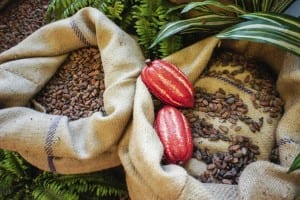 The true origin of cacao is largely unknown; however, a recent archaeological study provided evidence that Ecuador may have been the original home of the cacao tree.
The true origin of cacao is largely unknown; however, a recent archaeological study provided evidence that Ecuador may have been the original home of the cacao tree.
An archaeologist named Francisco Valdez unearthed ceramic pottery dating back to 3,300 BC that contained microscopic traces of cacao, suggesting the beans were cultivated and consumed in the area more than 5,000 years ago.
Many believe Ecuador was largely responsible for introducing chocolate to the West – while gold and silver were taken from most Spanish colonies in South America, Ecuador was exploited for its abundant supply of cacao.
Exporting cacao
Ecuador produces only 4% of the entire world’s cacao, however, the country is the largest producer of fine aroma cacao, providing over 70% of the world’s supply. Given the fact that cacao is a huge part of Ecuador’s history, it comes as no surprise that it was declared “Product Symbol of Ecuador” in 2005 by the country’s Ministry of Agriculture.
Though Ecuador produces some of the best cacao in the world, due to the limited processing capacity, a significant percent of the cacao beans are exported as raw material overseas (mostly in Europe). The beans are then processed in chocolate factories, and later on sold at gourmet chocolate shops throughout the world.
There are various types of cacao cultivated in Ecuador, but the most sought-after variety is known as “Nacional,” a type with distinctive aromas and the highest quality of grains.
The cacao beans’ fine aroma and superior quality makes it ideal for producing gourmet dark chocolate or vegan chocolate, as milk products are no longer required to balance the rich taste.
The artisans of Cuenca, Gualaceo, and other towns in Ecuador
Along with the world-class organic goods Ecuador exports throughout the globe, the country also boasts exquisite art, apparel, and other products handcrafted by many skilled indigenous artisans.
Ecuadorian artisans have mastered their craft over the past 200 years or more, passing down their skills and knowledge to succeeding generations. Many of the traditional methods practiced in the past are still used to this day.
Tourist guides and travel books will point you to the direction of Plaza de los Ponchos in Otovalo if you’re looking for the finest artisan products, but this isn’t the only place where you can find unique crafts…
Cuenca
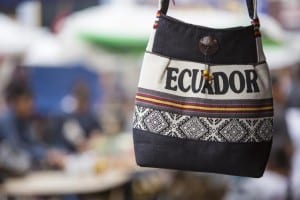 In Cuenca, you can find a number of craft shops along Gran Colombia and Benigno Malo Street selling artwork and souvenir items that include carvings, ceramics, basketwork, jewelry, embroidered apparel, painted wood, and woven accessories. Visitors can also shop for unique leather items in the stores along Simón Bolivar, the street parallel to Gran Colombia.
In Cuenca, you can find a number of craft shops along Gran Colombia and Benigno Malo Street selling artwork and souvenir items that include carvings, ceramics, basketwork, jewelry, embroidered apparel, painted wood, and woven accessories. Visitors can also shop for unique leather items in the stores along Simón Bolivar, the street parallel to Gran Colombia.
Gualaceo
The charming rural village of Gualaceo is known for producing fine artisan crafts. The town is home to two well-known markets that produce a variety of beautiful handcrafted products. Drop by the textile shops and observe the artisans’ expert use of the back strap loom and horizontal loom. You can also see them use a Hispanic technique known as “Ikat” to create shawls, ponchos, rugs, and scarves.
San Bartolome
Head to San Bartolome, a town located below the majestic Andes Mountains. In addition to the marvelous views, you’ll get to see the unique process used by talented artisans to create guitars.
Chordeleg
The town of Chordeleg is known throughout the country for producing elaborate ceramic, gold, and silver jewelry. The local artisans are experts in filigree work made out of gold and silver threads.
—
If in you’re interested in discovering more about Ecuador’s skilled artisans, LIVETHELIFE is more than happy to provide you with more information. Get in touch with Torrin Brauch at 239-848-5876 (US) or 097-994-7640 (Ecuador). You can also send him an email at torrin@livethelifeinecuador.com
Kite Surfing Southwest of Manta
The port city of Manta is the fifth-largest city in Ecuador, and one of the largest cities in the province of Manabi. The city is famous for being an important hub for the country’s fishing and tuna-processing industries. It is also an attractive tourist spot due to its vibrant nightlife and close proximity to the handicraft town of Montecristi.
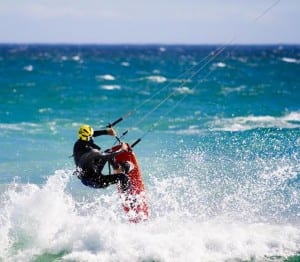 Additionally, Manta is increasingly becoming a popular jump-off point for outdoor enthusiasts heading to Santa Marianita Beach, a world-class spot for kite surfing/kite boarding.
Additionally, Manta is increasingly becoming a popular jump-off point for outdoor enthusiasts heading to Santa Marianita Beach, a world-class spot for kite surfing/kite boarding.
The perfect kite surfing destination
Because of its fantastic conditions for kite surfing, Santa Marianita Beach is recognized as one of the best beaches in the entire world for the sport.
The beach boasts an extended windy season that stretches from May to December, with wind speeds that average 14 to 25 knots. The 5km sandy beach combined with side-onshore wind direction and one to two-meter waves makes Santa Marianita Beach a safe and enjoyable location for beginners as well as experienced pros.
Kite surfers in Santa Marianita Beach typically use kites that measure 9m to 12m. The perfect time to kite surf is usually around noon, with the wind gradually increasing towards mid-afternoon. Kite surfers can enjoy consistent, calm wind conditions with no gusts that can last until 5pm.
More experienced kite surfing enthusiasts can choose to schedule their trip during November to January, as bigger waves that can reach up to three meters start to come in.
Other activities in Santa Marianita
- Visitors can drop by the nearby town of Montecristi to shop for handmade crafts and other great souvenir items. Montecristi is the town where the famous Panama hats are made.
- Surfing is a popular activity in other beaches south of Santa Marianita. Tourists can also experience whale watching at some of the beaches from June to October.
- The Machalilla National Park in Puerto Lopez is easily accessible from Santa Marianita. Here, many tourists can enjoy activities like snorkeling, whale watching, and hiking.
—
If you’d like to find out more about Santa Marianita Beach and other superb kite surfing destinations in Ecuador, get in touch with Torrin Brauch at 239-848-5876 (US) or 097-994-7640(Ecuador). You can also send him an email at torrin@livethelifeinecuador.com
Tips for real estate investors in Ecuador
 With its abundance of investment opportunities, Ecuador is one of the top locations when it comes to overseas investing. One of the many reasons why the country attracts many foreign investors is its lenient investment regulations. Whether you’re a foreign or local investor, you can expect equal treatment – foreign investors basically have the same rights as Ecuadorian citizens.
With its abundance of investment opportunities, Ecuador is one of the top locations when it comes to overseas investing. One of the many reasons why the country attracts many foreign investors is its lenient investment regulations. Whether you’re a foreign or local investor, you can expect equal treatment – foreign investors basically have the same rights as Ecuadorian citizens.
If you’re planning to invest in Ecuadorian real estate, here are a few tips that can help you:
Get professional assistance
While you can land several good foreign real estate deals directly from owners, purchasing through a reputable real estate professional can save you from running into potential roadblocks when buying overseas property.
At LiveTheLife, we’ll make every effort to help complete each deal, keeping you well-informed throughout the entire process.
Translate any documents written in a foreign language
Have any documents relating to a real estate transaction professionally translated before signing them. Signing anything you don’t understand is incredibly risky – you will want to make sure you fully understand what you’re agreeing to.
Guard against potential legal issues
Even though Ecuador does not have that many restrictions when it comes to foreign investments, it’s always a great idea to seek the services of a locally licensed lawyer to assist you with your purchase.
LiveTheLife ensures all transactions are completed by attorneys who will conduct title searches and go through the necessary steps in order to guarantee an accurate title is delivered.
Look for a dependable foreign exchange solution
After you read, understand, and agree to the terms of purchasing an overseas property, the next step is to pay for it. It can get a bit tricky, as local banks usually provide sub-par forex services.
What you need to do is find better foreign exchange solutions that can allow you to make mortgage payments without any hassle, allowing you to save money as well.

